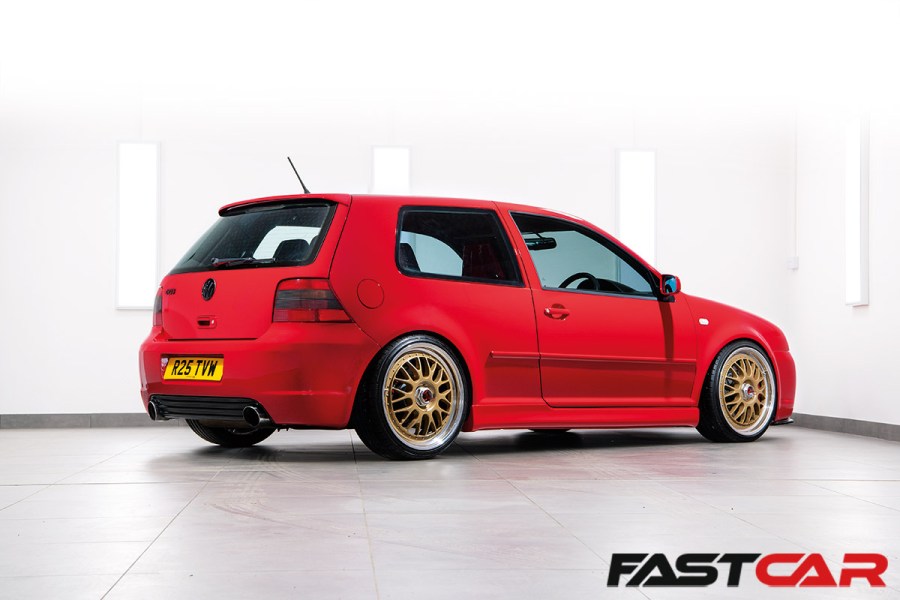While VW was celebrating 20 years of R-badged Golfs with the most powerful version to date, Jay Turner was putting the finishing touches to his modified Mk4 Golf R32 project, complete with a 500hp RS3 engine.
Launched as a boundary-pushing halo model back in 2002, it’s almost impossible to imagine later generations of the Golf bloodline without the contribution of the Mk4 R32. This was the complete package; a blend of six-cylinder noise and performance, four-wheel drive grip and the sort of understated muscular presence hot Golfs had lacked since the Mk2 Rallye. If the Mk1 GTI stake a claim to laying the foundations of the water-cooled scene, then the dawn of the R era reset expectations all over again.
Today, the Golf R has become a mainstream part of the line-up, and the original R32’s boundary-pushing has helped it to mature from a modern classic to a classic in the collectable sense of the word. But while the ageless styling all-weather performance still stacks up, there’s still room for improvement if you’re prepared to make a few brave decisions along the way. With more RS than R under the skin of this one, Jay Turner clearly isn’t someone who worries about the purists.
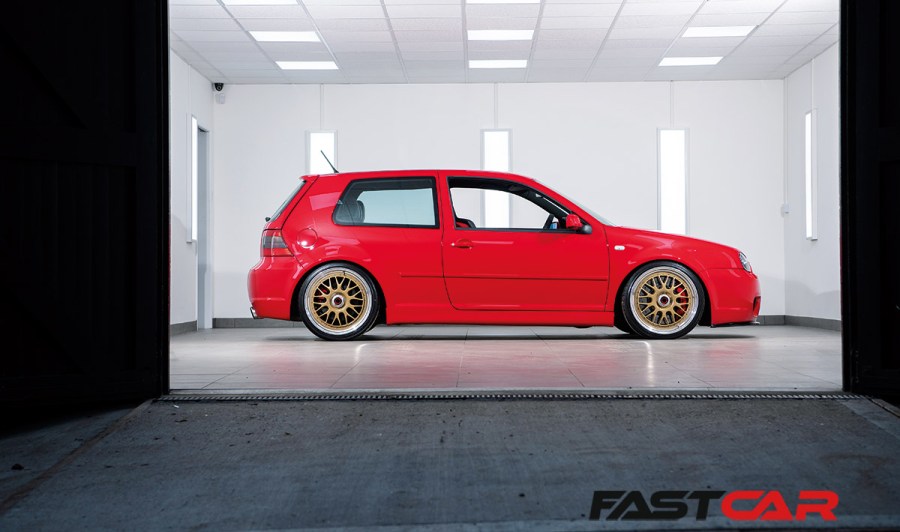
Why a VW Golf Mk4 R32?
“I have always loved the Mk4 R32; they sound amazing, and they look spot on, but they are so slow and underpowered,” he tells us. “R32 turbos are good fun – I’ve built one of those too – but this car started with the idea that I could be the first to fit a genuine TT-RS or RS3 engine instead. The Audi five-pots make a great noise, and I couldn’t get that Quattro soundtrack out of my head.”
This sort of constantly snowballing inspiration is nothing new for Jay. His taste for one-off Volkswagens was seeded by his brother’s Mk1 Golf projects, which materialized as a Rallye-fronted Mk2 tucking Borbet wheels under G60 arches. This started a string of impeccably executed builds, including the S3-powered orange-on-black Berg Cup inspired Mk1 that made our cover car in June 2017. It’s a familiar story in these pages, but you might be surprised to hear that the Mk4 was sort of a side project.
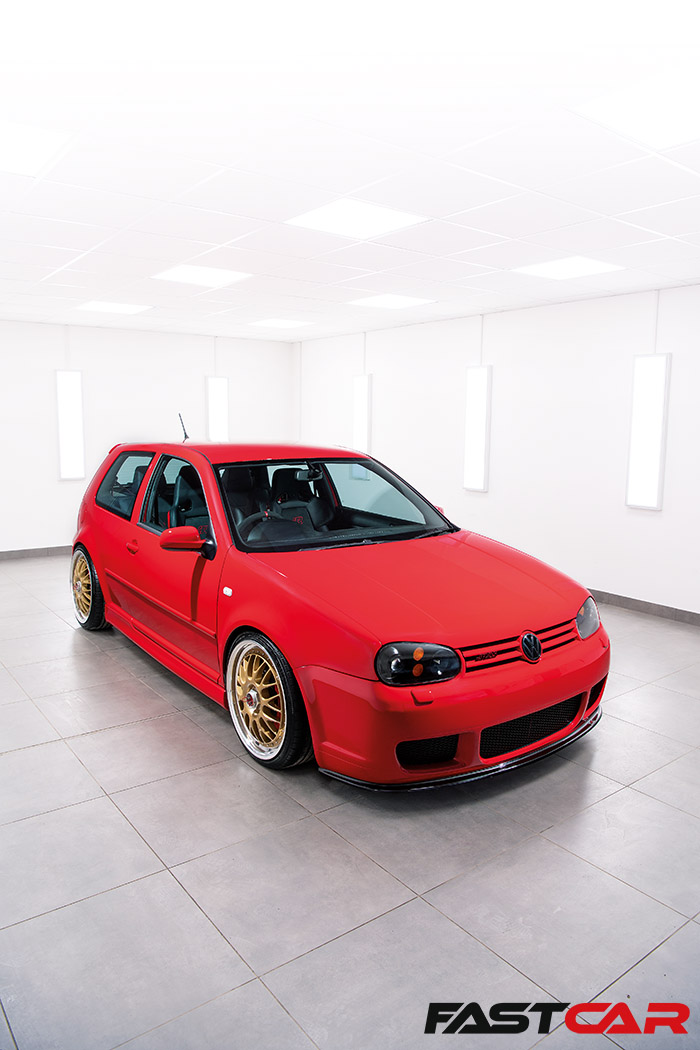
Buying the Mk4 Golf R32 shell
“The R32 shell popped up in July 2020,” he continues. “I was already a long way through a Mk1 with my good friend Olly Bartlett, and we had got as far as building the subframe for an RS3 five-cylinder and the tunnel for the four-wheel drive system. He was getting through the work, but it was taking time and I wanted something I could get up and running quicky, so I asked if he fancied building another one…”
If you’re thinking stripping the name-defining elements of an appreciating classic car sounds drastic, we’d suggest pausing your hand wringing for a moment. Only 38 Tornado Red Mk4 R32s made their way to UK owners, but this one was far from a museum piece, arriving at Jay’s house as a 160,000-mile non-runner, part-stripped and perfect for the Group B soundtrack he had in mind. Or, at least, it would be once he’d put the foundations right.
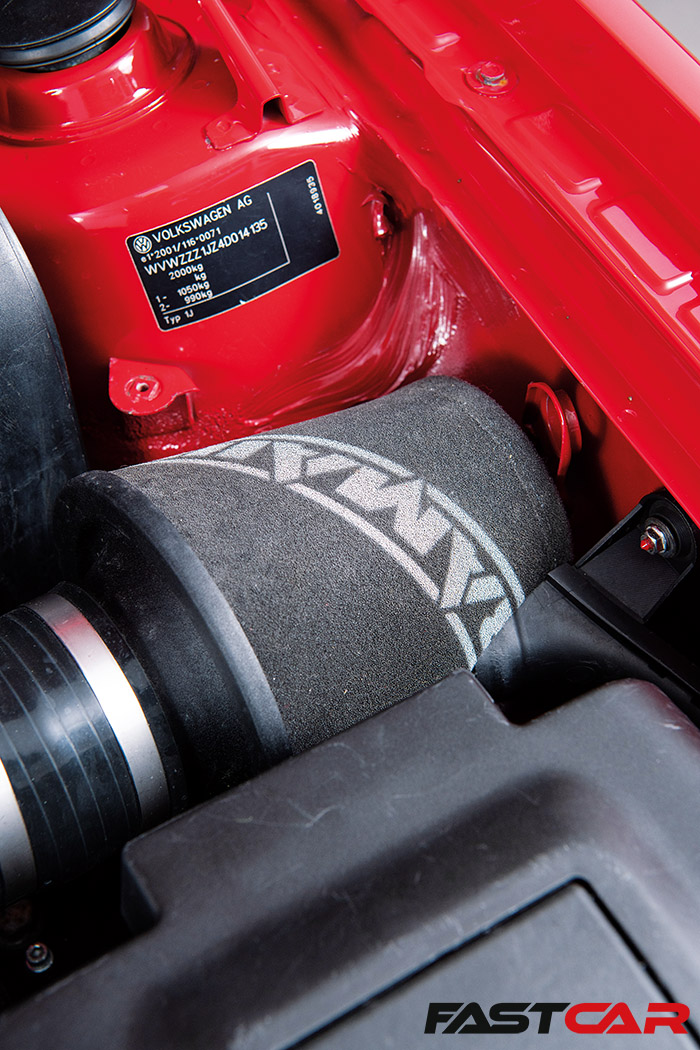
Expecting the worse
“I’ve learned never to underestimate old cars, and this one was no different,” he laughs. “It wasn’t until it had arrived, and I got started on the work, that I realized how bad it was. The shell looked like it had been parked in the sea for fuck’s sake, and a lot of the parts – like the brake lines – had been cut out and were missing. Pretty much everything on the car is brand new now.”
That really isn’t an exaggeration of the nut-and-bolt work involved. The body needed panel-by-panel restoration, including replacement front wings and sills on both sides before it could be rolled into the bodyshop to have that rare Tornado Red paintjob renewed. Crouch and squint underneath and you might just about spot a full set of replaced, restored and powdercoated suspension hardware too. It’s been an expensive reminder of the R32’s transition from a modern classic to, well, a bona fide classic car. Jay clearly doesn’t do things by halves.
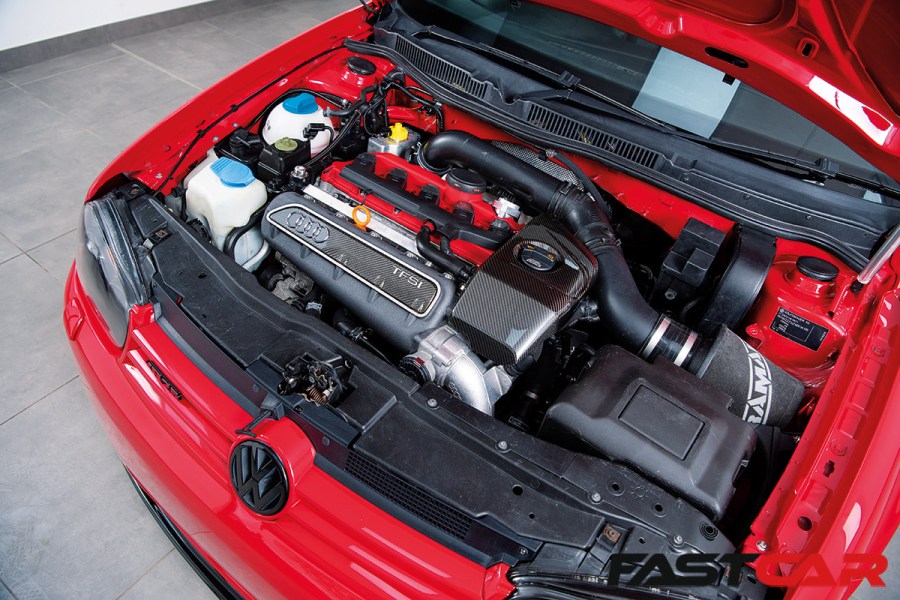
Sourcing the five-cylinder engine
The Mk1 didn’t donate anything to its stablemate. With a set formula in mind for the Mk4, Jay had tracked down another five-cylinder engine before the donor bodyshell arrived and Olly trial-fitted most of it before the restoration began. Although forced induction four-pots have pushed later R-badged Golfs comfortably beyond the Mk5 R32’s 250hp, its descendants have yet to benefit from Audi’s inline five. It’s a divisive swap but, with 340hp in standard tune and less weight sat on the front axle, it’s got more than enough performance to be worthy of the R badge.
“The only similar car I could think of when I started this was Dutter Racing’s R32, but it has an N/A 2.5-litre five-pot with a turbo bolted onto it, and that’s a different conversion,” says Jay, lifting the bonnet on the Golf’s new powertrain. “Although the bodywork didn’t need to be altered, as such, it isn’t an easy swap and it needed a lot of custom parts. Luckily Olly is at the top of his game for conversions like this.”
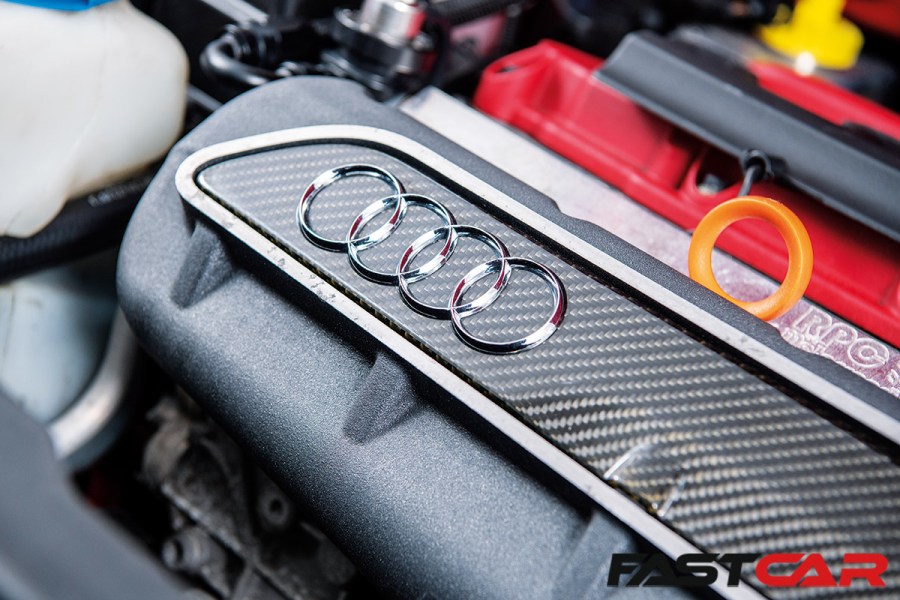
Custom parts to make the RS3 engine fit
The result belies weeks of trial, error and fabrication; a five-cylinder so at home behind the Mk4’s ovoid headlights that, if wasn’t for the Audi badges, could be mistaken for standard kit. Meshing two generations of Volkswagen Group hardware required a full custom wiring loom and an “armadillo-like” exhaust downpipe, carefully packed into the tight gap between the block and the bulkhead. An EMU Black Series ECU takes care of managing the interactions between old and new, including a conversion from direct to port injection using an RPC short-runner inlet, which also deletes the restrictive intake flaps. Naturally, every worn or weathered part was replaced as the build came together.
The engine itself was only one of the mechanical headaches. Any uplift in power would have been wasted without retaining the R32’s all-wheel drive system, and Jay could be picky with the parts he used. The Golf uses a six-speed manual gearbox from a 1.8T Mk1 TT Quattro with the R32’s original prop and driveshafts, and it’s mated to the new engine with the help of a custom flywheel, Sachs clutch and a mix of Vibra Technics mounts. Although the R32 was Volkswagen’s first car with DSG, that wasn’t part of the spec list here.
“I have DSG in my Caddy van and my old Mk7.5 Golf R had it too,” explains Jay. “In a modern car it’s great, but I’ve never wanted it in something older, because I think it takes the fun away. This was always going to be a manual.”
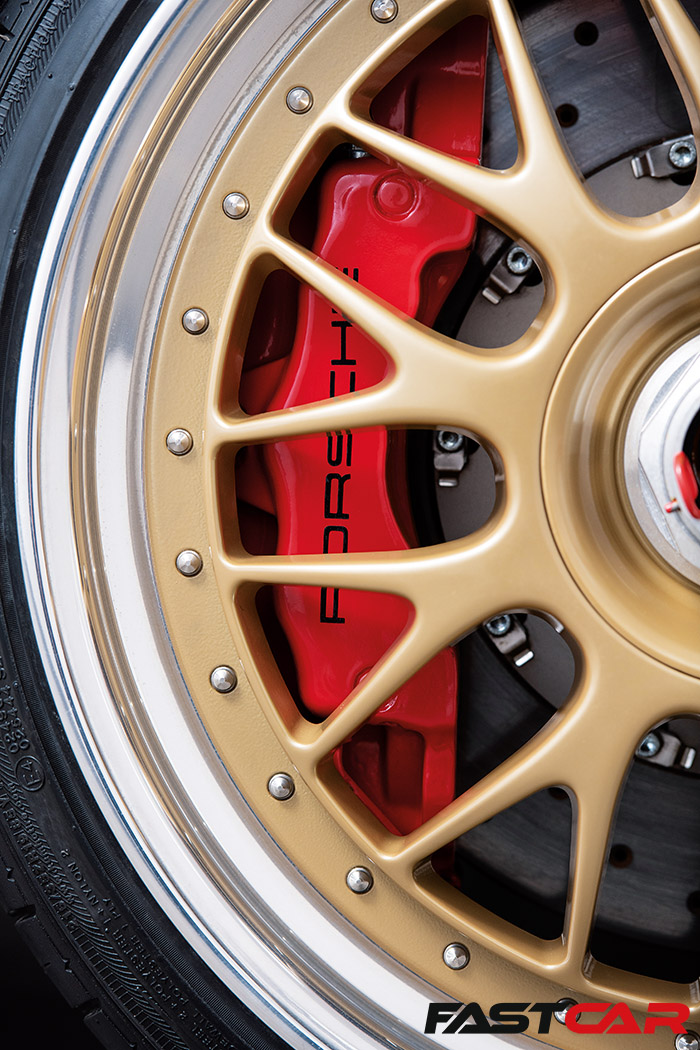
Chassis modifications for the VW Golf Mk4 R32
Having opened the floodgates on an influx of new technology, it was important to bring the chassis up to spec too. That muscular R32 stance is enhanced by fully adjustable BC Racing coilovers and staggered spacers with a Mk5-spec 5×112 hub conversion, while a complete set of Powerflex polyurethane bushes reintroduces some welcome precision into the car’s 20-year-old suspension parts. Six-piston Porsche calipers grip 370mm RS-3 discs at the front, while the factory rear calipers have been spaced for S4-spec hardware, while the smaller JAATT Engineering brake fluid reservoir freed up more space for the wider engine.
That level of root and branch overhaul wasn’t always necessary. The R32 was strong enough visually to inspire countless enthusiast-built lookalikes, and Jay saw no real need to ramp up the aggression much further. The rework is a subtle, OEM+ affair, switching the slotted original bumper for an R-Line item with its center section adapted for a twin-exit Milltek exhaust system. Up front, the Tornado Red bodywork is contrasted against a slim Triple R Composites splitter, headlights with black internals, and a full set of new plastic trim. Well, if it ain’t broke…
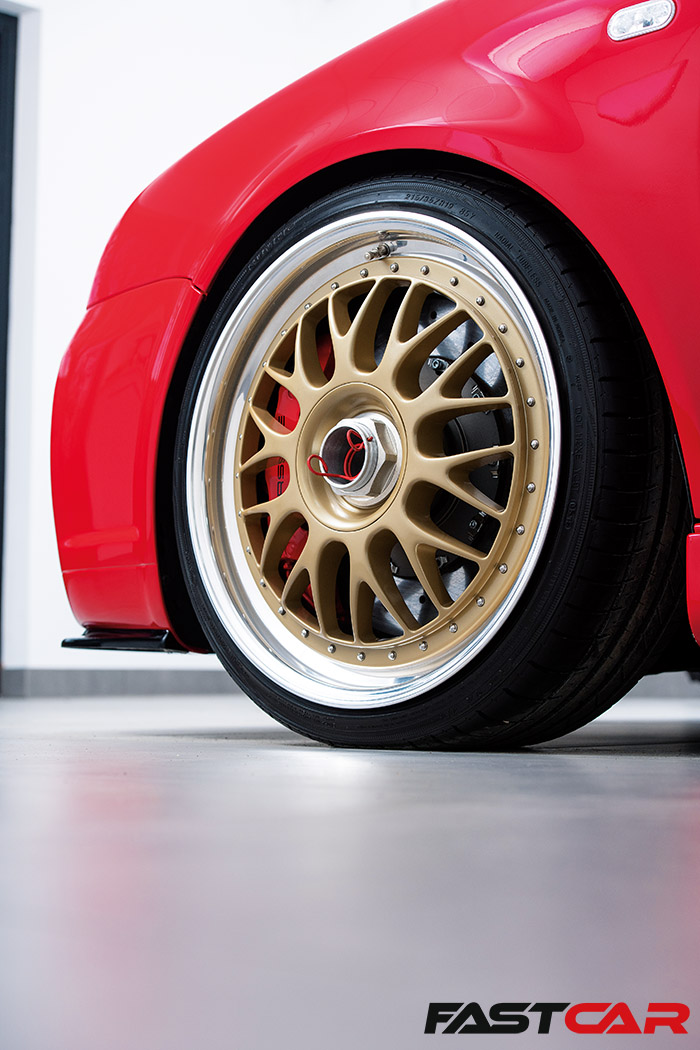
Aftermarket wheels for the modified VW Golf Mk4 R32
The finishing touch for the modified VW Golf R32 was a suitably tough set of wheels, and Jay says there was only one choice. “I always come back to BBS when I’m choosing aftermarket wheels, I just can’t have a Volkswagen without them,” he laughs. “These GT006s were the icing on the cake – a guy called Kev over in Ireland had them sat away, freshly refurbished in gold, and they were 19-inch so perfect spec for a Mk4. All I had to do was add some custom center-locks to finish them off. It was a lot of work to get them under the arches, but who doesn’t love a red Mk4 on gold wheels?”
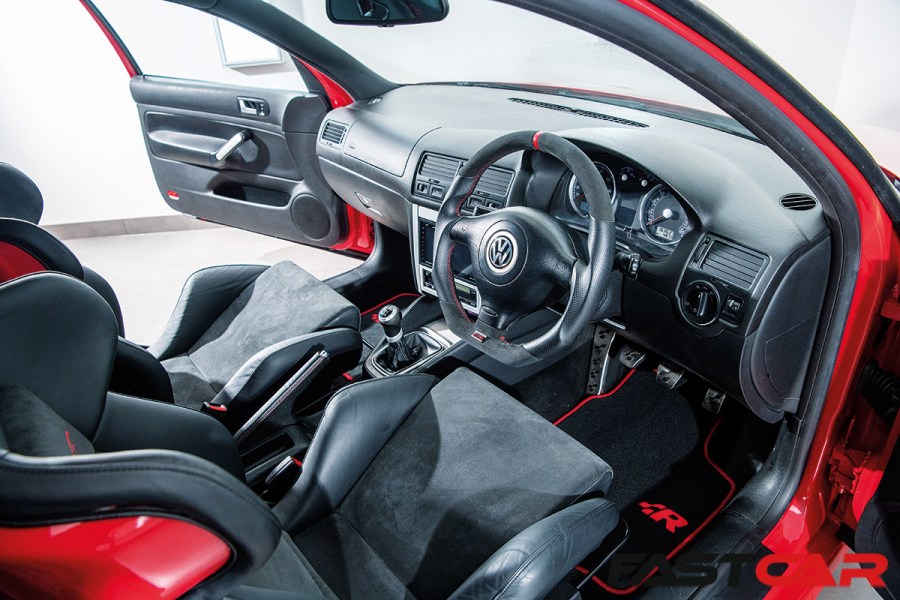
Interior upgrades
Unsurprisingly, the interior faced similar scrutiny as the project gathered pace. Volkswagen lavished the R32 with accents of silver and aluminium and unique König bucket seats, but two decades and mileage equivalent of six laps of the planet had taken its toll on the interior and Jay had spotted gaps in the standard spec. Most of the silver accents, including the clocks, made the final cut but the red-stitched handbrake, pinstriped seatbelts and dark headlining were all lifted from a 25th Anniversary edition Mk4 GTI. Paired with 12 o’clock marker on the custom-made flat bottom steering wheel, it’s a visual link to the Tornado Red bodywork.
However, Jay wasn’t pulling everything out of the OE parts bin: “I’ve always been a sucker for Recaro A8 seats – I had another pair for the Mk1 but Olly was struggling to make them fit either side of the tunnel. These were imported from Germany, trimmed in black Porsche Nappa leather with alcantara centres, and the guy sent me some extra material with logos for the rear bench, so everything would match,” he continues.
“As I knew I’d be changing the rear bench, I swapped to one from a Recaro interior so it would have three headrests instead of the two you get in an R32. Lawrence at LG Trimming always does a good job, so I knew it would match perfectly. I love the original interior, so I wanted a subtle update.”
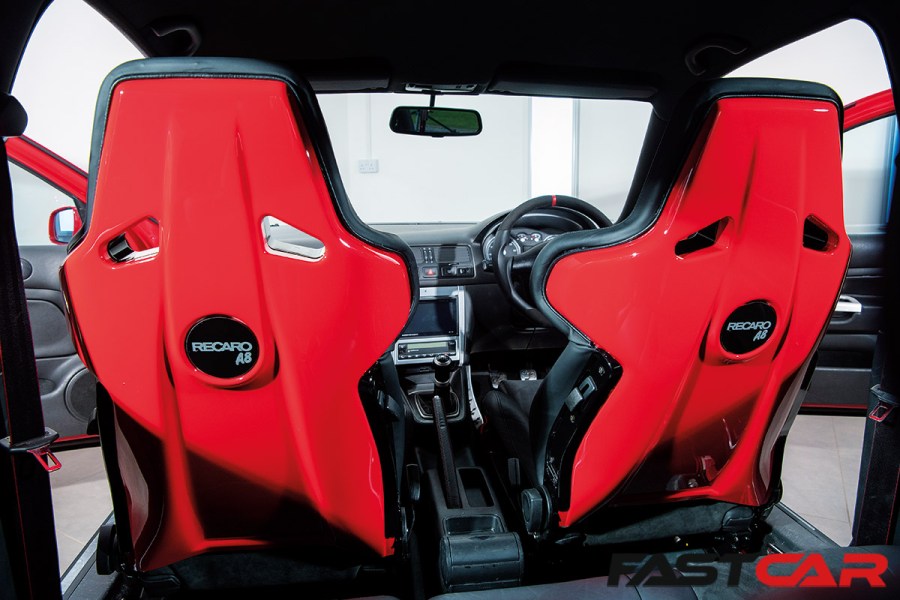
Modified VW Golf Mk4 R32 engine performance
Of course, any hint of that visual subtlety dissolves as soon as Jay puts the powertrain to use. With somewhere close to 500hp under the bonnet and all of the right parts to make use of it, the world’s first Mk4 R25T feels every bit the sympathetic reinterpretation of the complete package Volkswagen designed back in 2002. This one might not please the purists, but it’s an addictive formula on the road. And – as this is a car that’s built to be driven – that on-road appeal is where the hard work really counts.
“I could push it further, but this car was never about the power – it was always about the challenges of getting that engine in there, and building something unique,” he says. “As it is, it handles absolutely perfectly; it’s like an R32, but with that awesome five-pot noise and twice the power on tap.”
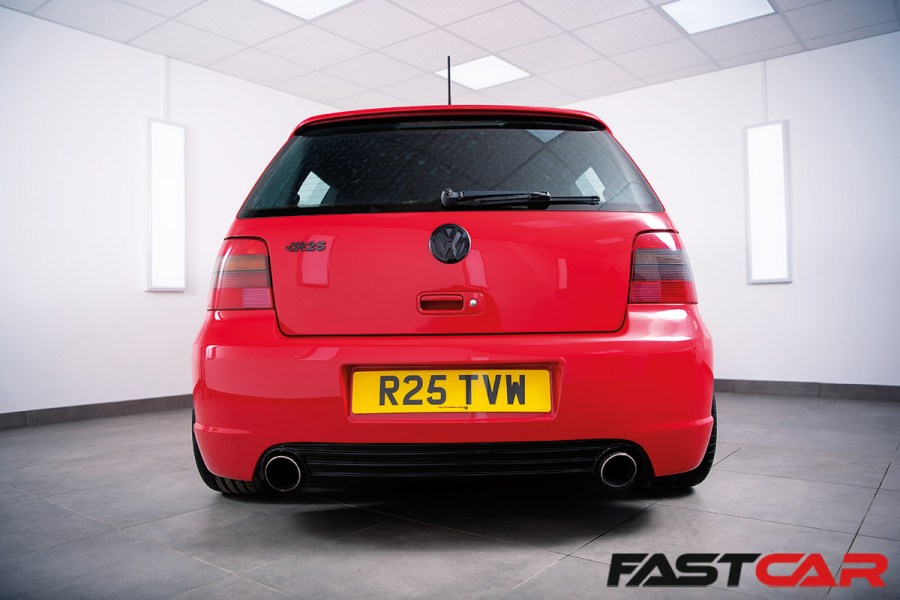
Conclusion
Not a bad distraction from the main event, then. Having scratched that itch of curiosity with the Mk4, Jay is back on the slow-burn Mk1 project and – though he isn’t giving much away yet – a TT RS powertrain in a lightweight tubular chassis ought to run rings around the R25T. And that’s saying something.
“It’s like the calm before the storm,” he smiles. “I’ve learned that cars cost a lot of money if you build them the way I build them, but that’s the only way I know. My love of cars came from my family, and I’m passing that down to my kids – this car, and the Mk1 are both being built for them.”
Whatever the R32’s bloodline has evolved into by that point, it’s hard to imagine Jay’s reinterpretation of one of the most influential Golfs will feel any less relevant when they can get behind the wheel. Combining five-cylinder noise and performance, four-wheel drive grip and striking just the right balance of subtle menace, it’s a timeless update of a bona fide modern classic. After 20 years, who says you can’t reset the boundaries all over again?
Words: Alex Grant Pics: Ade Brannan.

